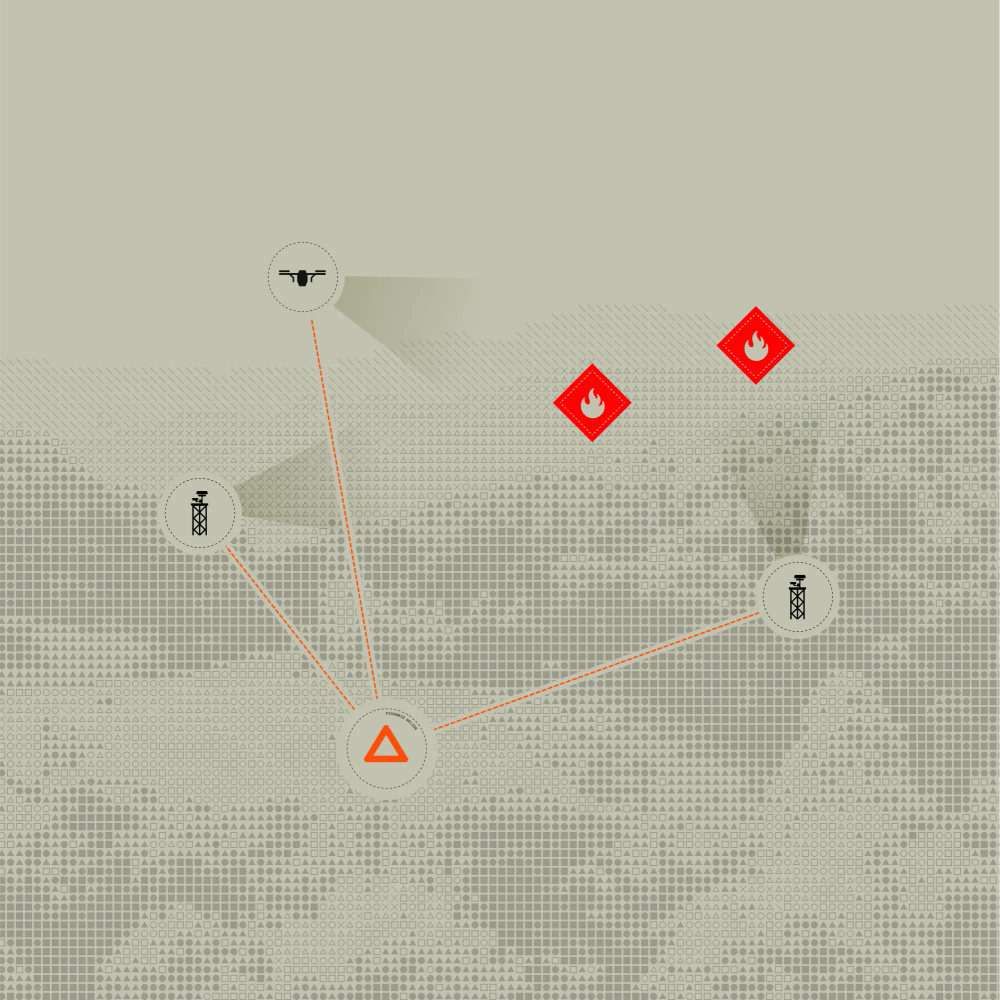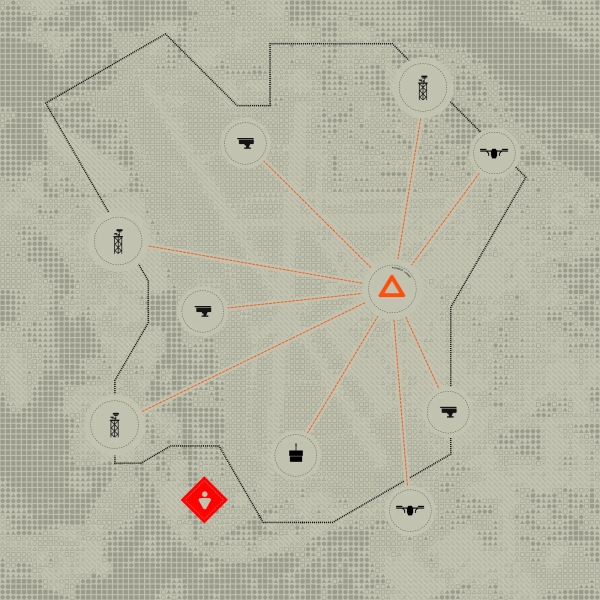
Wildfire Intelligence
Unify sensors and drones into a real-time system for faster wildfire detection and coordinated response.
Defense, General
Close base security gaps by unifying fragmented force protection systems into a cohesive network.

Domestic, international, and forward-operating bases face persistent Protection Level 1–4 security gaps, especially as the joint force adopts dispersed operations to enhance survivability. Over the past 20 years, the Department of Defense has acquired hundreds of force protection systems and software tools. The issue isn’t lack of capability—it’s fragmentation. These systems operate in silos and don’t communicate.
If I come to your base and you showcase your B-DOC that displays static cameras at fence lines and a Defender with a handheld radio… you are defending your base in exactly the same way we did in 1968… what you are showing me is not layered or integrated base defense… you are showing me ancient base defense.
— General David L. Goldfein, 21st Chief of Staff of the United States Air Force in 2019
Picogrid delivers a platform that unifies maritime, ground, and air domain awareness into a single operational picture. It doesn’t replace existing security or air defense systems, it connects them across Areas of Responsibility (AORs) enabling secure, real-time collaboration between tactical units and command elements.
We’re building a future where information moves freely across echelons: a Commanding General can review threats from a coffee shop, while a Defender on the ground receives real-time intelligence from every sensor in the network.
A core part of this approach is our partnership ecosystem. We’ve built relationships with hundreds of hardware vendors, integrators, and mission partners enabling the government to organize around problem sets rather than platforms.
Picogrid is operational at over two dozen DoD installations and expeditionary locations. Our platform integrates a wide array of sensors, detects thousands of threats, and uses AI to process over 3 million data points per day.
